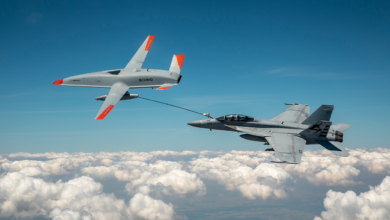NASA approves asteroid-hunting space telescope to monitor near-Earth objects

[ad_1]
NASA plans two missions to Venus
NASA aims for two new missions to Venus to learn more about the ‘lost habitable’ world; former NASA astronaut Tom Jones provides insight on ‘CAVUTO Live.’
NASA’s Jet Propulsion Laboratory announced Friday that the agency has approved a new infrared space telescope in the effort to help advance planetary defense efforts.
The Near-Earth Object Surveyor space telescope (NEO Surveyor) will move to the next phase of mission development at JPL after a successful review that moved the mission forward into preliminary design.
The NEO Surveyor was proposed to aid NASA’s ability to both discover and characterize near-earth objects, like the “potentially hazardous” asteroid 2021 KT1.
KT1, the size of Seattle’s Space Needle, recently hurtled past Earth at a distance of approximately 4.5 million miles and a velocity of 40,000 mph.
According to NASA, a near-Earth object is an asteroid or comet that approaches within 1.3 astronomical units of the sun.
The agency has been on a mission to discover 90% of NEOs larger than 459 feet in size and has reportedly found around 40% of near-Earth asteroids within that range.
In 2010, NASA completed its goal to discover 90% of all NEOs larger than 3,280 feet in size.
“Each night, astronomers across the globe diligently use ground-based optical telescopes to discover new NEOs, characterize their shape and size, and confirm they do not pose a threat to us,” Kelly Fast, program manager for NASA’s NEO Observations Program, said in JPL’s announcement. “Those telescopes are only able to look for NEOs in the night sky. NEO Surveyor would allow observations to continue day and night, specifically targeting regions where NEOs that could pose a hazard might be found and accelerating the progress toward the Congressional goal.”
NASA GIVES ALL CLEAR: EARTH SAFE FROM ASTEROID THREAT FOR 100 YEARS
Discovering, characterizing and tracking potentially hazardous NEOs is critical for the safety of the planet and ensures that deflection or impact mitigation can be carried out before catastrophe strikes.
While NASA has given all-clears for some NEOs, like the “God of Chaos” asteroid Apophis, using telescope observations and there are no known impact threats to Earth for the next century, unpredicted impacts by unknown NEOs are still a threat.
The surveyor telescope would use infrared sensors to locate NEOs that pass Earth during the day from closer to the sun — an ability not currently possible for ground-based optical observatories.
CLICK HERE FOR THE FOX NEWS APP
The telescope’s launch is set for the first half of 2026 and is also being managed by NASA’s Planetary Missions Program Office at Marshall Space Flight Center with oversight by the Planetary Defense Coordination Office.
NASA is also expected to launch the Double Asteroid Redirection Test (DART) mission to test deflection technology later this year.
[ad_2]
Source link






